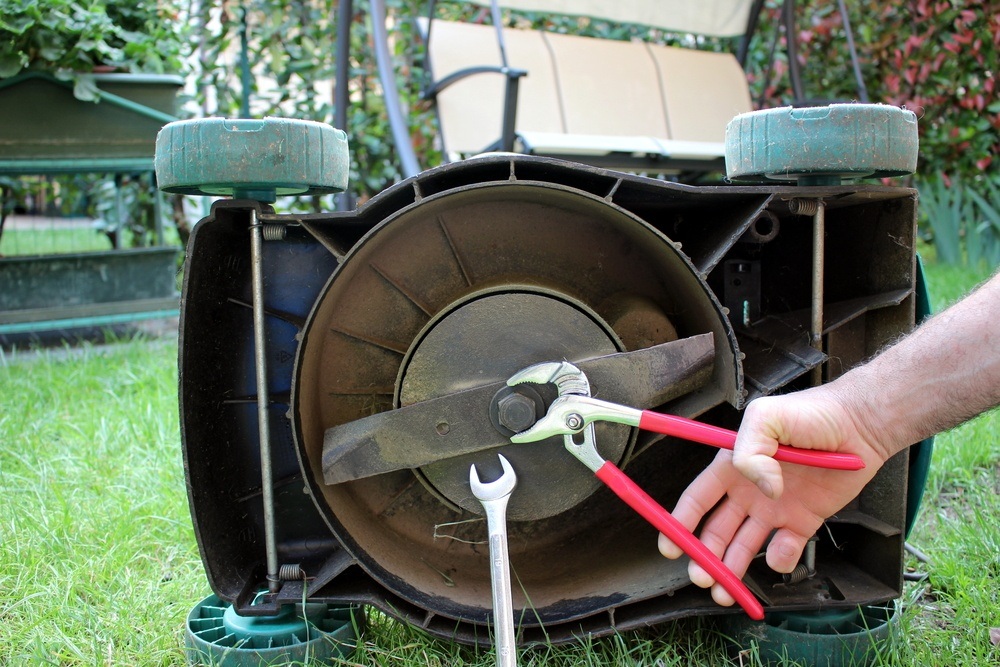The blade on your lawnmower needs to be sharp or it will not cut your lawn properly. One general way of finding out if your blades are overdue for sharping is by observing both the grass and the blade itself for physical defects. Remove a few grass blades after mowing and observe the tips. Is the cut a clean one or do the tips look like they have been torn off? If tips appear uneven then chances are you will need to have your blades sharpened or replaced.
Thorn grass blades are aesthetically less pleasing, have less moisture retention, and can make your lawn more susceptible to disease. If you choose to sharpen your blades there are a few steps you can take to ensure personal safety and save time. Before attempting to sharpen your own blades you should consult your vehicle owner’s manual.
Disconnect power supply
Before starting any kind of maintenance always be sure to disconnect all power. This is the only way of avoiding accidental engine start while you are in contact with blades.
Remove batteries from battery-powered lawnmowers. Disconnect the spark plug from petrol-powered mowers and unplug any cord from outlets if you have a corded lawnmower. Wearing a sturdy pair of gloves is just as equally important. Though they may seem dull, a mower blade can still do damage.
Removing blades
After you have confirmed there is no longer a power supply, the next step will be the actual removal of the blades. Carefully lean the mower on its side with the mower deck expose. For petrol mowers, you will need to position the mower with the air filter facing upwards. This is done to avoid oil spilling over to other compartments within the engine.
Next place a block of wood or another object between the mower blade and the deck. This prevents the blade from rotating when turning the bolt that secures the blade. Use a spanner or similar tool to turn the retaining bolt counterclockwise, or to the left.
Take note of the order in which you removed the blade and other parts so you can reinstall them in their original position.
Sharpening the blade
Find a stable holding location like a vice to lock the blade in place so you have minimal movement while working. You will need a file or a grinder to begin the sharpening process. Begin to evenly file down the blade while following its contour. You can use a marker to draw a line on the contour to keep track of areas already sharpened.
Balancing blade
After sharpening you will want to ensure that the blade is balanced before refitting. Blades that are unbalanced will cause the mower to have unnecessary vibration and reduce performance. You can use a special tool called a blade balancer or a nail to observe the weight distribution on each end of the blade.
Place the blade on the balancer or nail and leave it for a few seconds. If one side is leaning down more than the other then you will have to sharpen the side that is downwards. A well-balanced blade should have equal weight distribution.
Reinstalling
The last step is refitting the blade back on the mower in the reverse order that you removed it. There are other methods of sharpening blades without removal from the mower, however, it may be more difficult. At the same time, you could end up causing damage to the blade or enduring yourself. Taking off the blades is the most convenient way and safer. For blades that are heavily damaged replacing them is the best option instead of trying to repair them.

